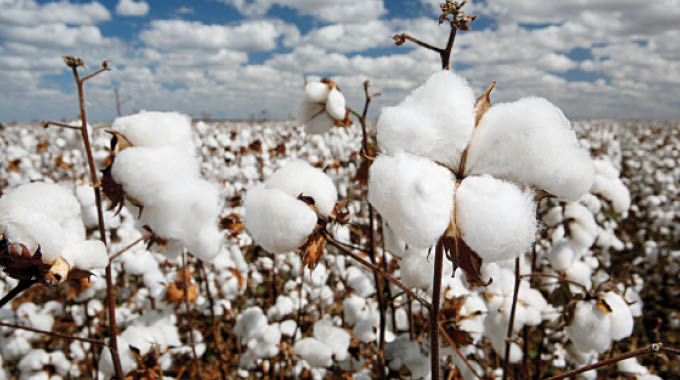
Harare Bureau
ZIMBABWE’S cotton output is set to decline by 74 percent this year after a severe drought that was experienced last season, according to Agriculture and Marketing Authority.
Output will be the lowest in two seasons to about 68 000 tonnes, 142 000 tonnes last year and 74 000 tonnes in 2017, AMA acting chief executive Ms Nancy Zitsanza said while giving oral evidence before the Parliamentary Portfolio Committee on Lands, Agriculture, Water, Climate and Rural Resettlement yesterday. “Production was affected by the drought, which we experienced this past production year,” she said. The drought also affected maize output, which dropped by 54 percent to 776 635 tonnes. About 357 000 cotton farmers were registered by six companies that funded production last season. In terms of funding contribution, Cottco, which is administering the Presidential Free Inputs Scheme contributed about 75 percent or $39 million, making it the largest sponsor.
The Government introduced the scheme to save the industry that faced imminent collapse after farmers abandoned cotton citing poor prices and low levels of funding. Introduced in 2015, the free input scheme has helped production to increase from 28 000 tonnes, the lowest output in nearly two decades to about 142 000 tonnes last season. At its peak, Zimbabwe produced 352 000 tonnes of raw cotton in 2012.
Other five players contributed the other 25 percent of funding, said Ms Zitsanza. However, she failed to provide proof of inputs procurement the committee had requested.
“You issued the licences based on what was disbursed . . . but we want to see the proof of procurement,” said committee chairman, Cde Justice Mayor Wadyajena, Member of Parliament for Gokwe-Nembudziya. Ms Zitsanza was later directed to compile and provide the information to the committee by Wednesday next week.
Speaking before the same committee, Cotton Producers and Marketers’ Association chairman Mr Steward Mubonderi, highlighted some of the challenges affecting the industry. These included the mobile payment system being used to pay the farmers. He said the punitive rates charged by errant businesses were heavily eroding farmers’ earnings. Mr Mubonderi also appealed that cash be made available to farmers in areas where there is no mobile network.
He also expressed concern over lack of research and development of new seed varieties, arguing this was affecting productivity. Mr Mubonderi said the current open pollinated varieties (OPV) were last introduced over a decade ago yet other cotton producing countries have already adopted hybrids varieties with high yields potential. Cottco has since indicated it will this year introduce hybrid varieties.
“We need more varieties to suit various regions, rainfall patterns and soils so that production increases,” he said. Further, he suggested that Zimbabwe, should seriously consider producing Genetically Modified Organism to increase production.
Turning to side marketing, Mr Mubonderi blamed AMA for lack of proper regulatory controls, warning “this is the (same) cancer” that once killed the industry. He said there were a lot of loopholes being used by cotton companies to engage in side marketing activities due to lack of proper regulatory enforcement. On declining production on the back of erratic rains, Mr Mubonderi said irrigation was the way to go.
Presentations from cotton companies could not be adequately heard after most of them failed to provide documents that the committee had requested. Alliance, Chishawasha and Southern Cotton were asked to submit the documents while Zimbabwe Cotton Consortium was asked to resubmit. China Africa was not represented. As for Alliance, the committee demanded the chairman of the company attend the next meeting.
“We don’t want one man show here,” Cde Wadyajena told Alliance head of operations Mr Peter Chapoterera. “Ask him the date, which he is flexible . . . so that he has no excuse.”
